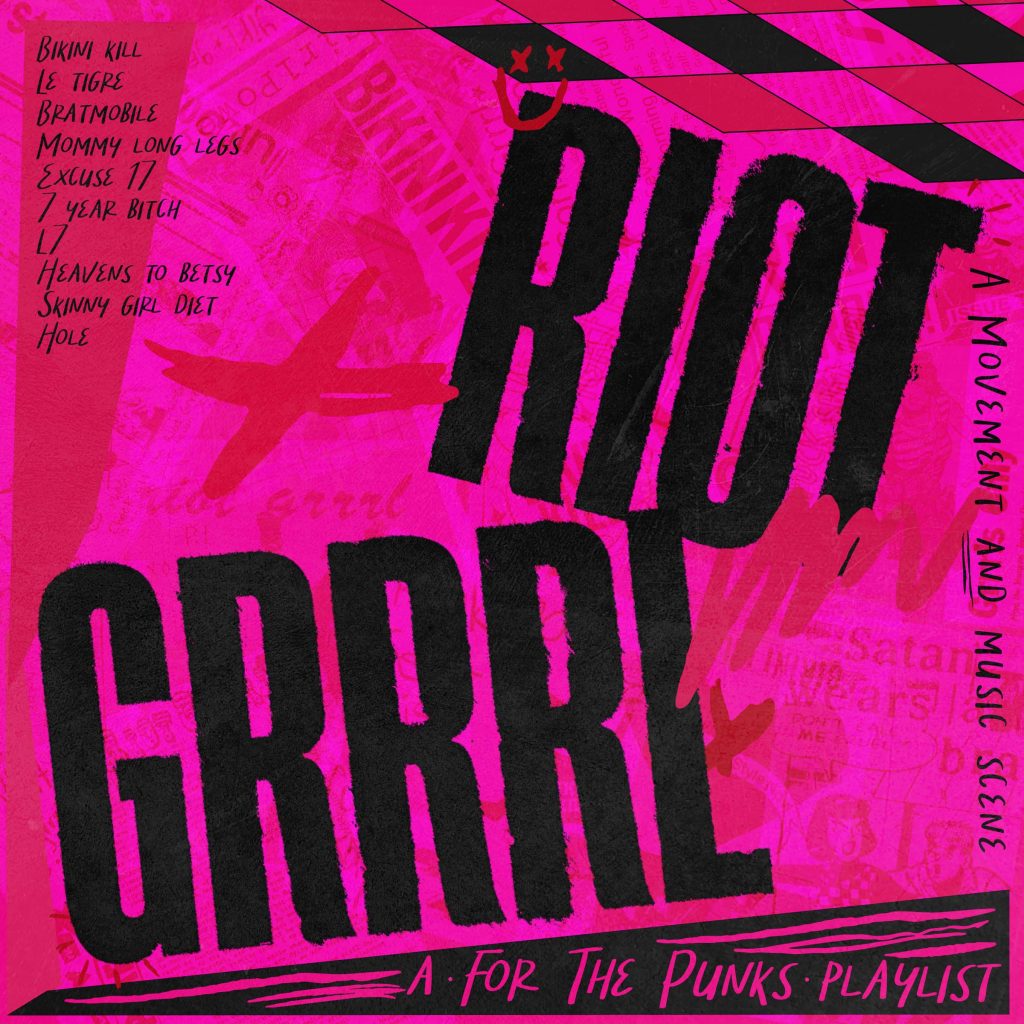
A Brief History
Punk was founded in 1977, based on a do-it-yourself ethic, an anti-capitalist mindset, and to make a place for outcasts to fit in. What happens when the scene made of outcasts rejects you? The principles that the scene was founded on were washing away, bands were selling out to make money, and the more popular punk became, women did not feel as though they had a place.
In Olympia, Washington, the beginnings of Riot Grrrl began. In 1991, Kathleen Hannah of Bikini Kill wrote the Riot Grrrl Manifesto, published in Bikini Kill Zine 2. Every statement of the document is important, but to me, the one line that speaks volumes is “BECAUSE I believe with my wholeheartmindbody that girls constitute a revolutionary soul force that can, and will change the world for real.” Riot Grrrl spoke out against sexism, racism, homophobia, sexual harassment, etc., which made the movement get negative attention from outsiders.
It was not only the ideals that people hated, it was also the look. The Riot Grrrl style knew no limits, Kathleen Hanna would even perform in a bra with “slut” written on her.

There was no one look in the subculture, but the clothing that women wore always went against society’s standards of beauty and femininity, creating a new definition for themselves. The women wore what they wanted whether it be oversized shirts or babydoll dresses. In the mid 90’s, the original name of a zine by Bikini Kill, “Girl Power” broke into mainstream pop. With artists such as the Spice Girls bringing girl power to people’s attention, the movement did not get represented properly.
First Generation Riot Grrrl
Bikini Kill

Bikini Kill is one of, if not the most influential band of the scene. They formed in October 1990, while the members attended The Evergreen State College. They would record five albums from 1991 to 1998. The band is currently made of the three original members, vocalist Katheen Hanna, bass guitarist Kathi Wilcox, and drummer Tobi Vail. In 2019, Erica Dawn Lyle joined the band playing guitar. Bikini Kill had one male member from 1991-1997 which was guitarist Billy Karren.
During the beginning of their career during shows, they would encourage women to push their way to the front. Also, Kathleen Hanna would physically remove rude men, who would physically and verbally assault her at shows.
Even though Bikini Kill currently has no plans to release new music, they are going on tour from April to September 2022.
Bratmobile

Bratmobile is another first generation riot grrrl band. Vocalist Allison Wolfe and drummer Molly Neuman met at the University of Oregon during fall 1989. They were active in the beginning of the riot grrrl scene, creating Girl Germs, a feminist zine in 1990. In July 1991, Bratmobile played their first show as a three-piece band with Erin Smith on guitar.
After releasing their first studio album Pottymouth and The Real Janelle EP, Bratmobile went on a hiatus in 1994. The band broke up on stage during a performance due to pressure from both media and the Riot Grrrl movement.
Bratmobile reunited five years later, releasing their second studio album, Ladies, Women, and Girls in 2000, followed by Girls Get Busy in 2003. After the tour promoting their third album, the members ended up going their separate ways, doing what they want both inside and outside of the music scene.
Other Media
Girls to the Front by Sara Marcus

Sara Marcus shares the history of the Riot Grrrl movement through research, interviews, and her own experiences. This book gives details about the movement that makes you feel like you lived it with them. Even though this book is packed with knowledge, it is an easy read.
Pretty in Punk: Girls’s Gender Resistance in a Boy’s Subculture by Lauraine Leblanc

This book focuses on not only the author’s experience of being a woman in the punk subculture, but she also interviews other women about their experiences. Leblanc interviews 40 people, of all different ages and socio-economic backgrounds. What I love most about this book are the appendixes that are at the back of the book. In that section, you can see every interviewee’s short biography, a list of terminology (and definitions) specific to the punk scene, the research questions that were asked, and a works cited section for further readings.
Rock She Wrote by Evelyn McDonnell and Ann Powers

Although this book is not about Riot Grrrl, it shows women’s musical journey from the 60’s to the 90’s. When reading this with knowing about Riot Grrrl, the movement seems to hold more weight, giving a better understanding of why they were so angry with the music scene.
